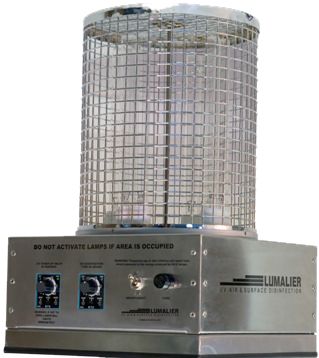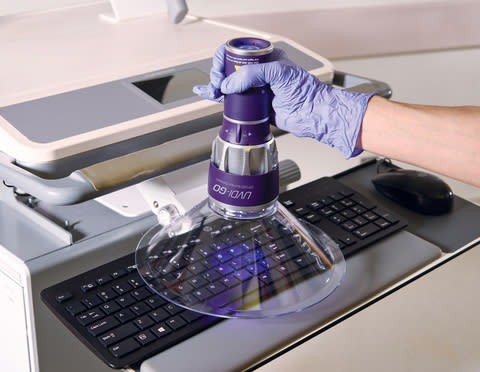UV Surface Disinfection Techniques: Making The Most Of Efficiency for Germ-Free Spaces
Introducing the Advantages of UV Disinfection: Making Sure Tidy and Disinfected Spaces
In the age of heightened understanding surrounding hygiene and tidiness, the value of reliable sanitation methods can not be overemphasized. While typical cleaning techniques have actually long been counted upon, improvements in technology have actually presented an innovative solution that makes sure tidy and sterilized areas: UV disinfection. By utilizing the power of ultraviolet light, this approach has acquired recognition for its ability to eliminate harmful virus and provide an extensive sanitization process. The benefits of UV sanitation prolong much beyond its efficacy. This conversation will check out the science behind UV disinfection, its efficiency on numerous microorganisms, its applications in various setups, and the advantages it holds over standard techniques. Additionally, we will certainly dig right into the safety factors to consider that need to be thought about when applying UV sanitation. Prepare to reveal a new measurement of cleanliness and discover the untapped potential of UV disinfection.

The Scientific Research Behind UV Sanitation
UV disinfection is a medically tried and tested technique that makes use of ultraviolet light to eliminate unsafe bacteria from surface areas and water. The science behind UV sanitation depends on the ability of UV-C light to damage the DNA and RNA of bacteria, rendering them not able to duplicate and causing their eventual fatality. UV-C light falls within the wavelength variety of 200 to 280 nanometers, which is very reliable in ruining bacteria, infections, and other pathogens.
When exposed to UV-C light, the genetic product of bacteria absorbs the power from the light, leading to the development of thymine dimers. These dimers interrupt the typical duplication and transcription procedures of the microbes, preventing their capacity to endure and duplicate (uv surface disinfection). The DNA and RNA damage caused by UV-C light is lethal to the microbes, making UV disinfection a efficient and trusted method for killing a large range of microorganisms
UV sanitation is especially useful in settings where standard chemical anti-bacterials may be ineffective or impractical. It is a non-chemical approach that does not leave any kind of deposits or damaging byproducts, making it safe for usage in food processing, medical care centers, water treatment plants, and numerous other sectors. In addition, UV disinfection is eco-friendly, as it does not add to the growth of antibiotic-resistant germs or various other unsafe contaminants.
Effectiveness of UV Disinfection on Microorganisms
The performance of UV disinfection in removing virus has been extensively researched and verified in various scientific research studies. UV radiation has the capability to inactivate a large range of microorganisms, consisting of microorganisms, fungi, and viruses, by damaging their DNA or RNA. This prevents them from reproducing and triggering infections.
One research released in the American Journal of Infection Control found that UV sanitation worked in reducing the existence of multiple drug-resistant germs in medical facility rooms. Another research study carried out by the National Institute for Occupational Safety and Health showed that UV disinfection had the ability to get rid of 99.9% of the flu infection on surface areas.
UV disinfection has additionally revealed promise in combating the spread of healthcare-associated infections (HAIs) According to a research released in The Lancet, the use of UV-C light along with standard cleaning procedures considerably lowered the incidence of HAIs in a health center setup.
In addition, UV sanitation has shown to be reliable against emerging microorganisms, such as the severe acute respiratory syndrome coronavirus 2 (SARS-CoV-2), which triggers COVID-19. A research study performed by the National Arising Infectious Illness Laboratories showed that UV-C light can suspend the infection on surfaces within secs.
Applications of UV Disinfection in Various Setups
With its tried and tested performance in removing virus, UV sanitation has actually discovered applications in a selection of settings. Among the most common locations where UV sanitation is used remains in medical care facilities. UV technology is used to sanitize patient areas, operating spaces, and other high-touch surfaces, reducing the threat of healthcare-associated infections. In enhancement, UV disinfection is likewise being implemented in food handling plants and dining establishments to make sure the security of foodstuff and avoid the spread of foodborne ailments. UV sanitation is also advantageous in water treatment plants, where it is utilized to eliminate hazardous bacteria and give safe alcohol consumption water.
Another crucial application of UV sanitation is in the air filtration market. UV air cleansers additional reading are made use of in domestic, industrial, and commercial settings to get rid of airborne germs, infections, and mold spores. This innovation is particularly helpful in environments where people are much more at risk to respiratory infections, such as health centers, institutions, and office complex.
Additionally, UV sanitation is significantly being made use of in public transport systems, such as buses and trains, to preserve tidy and sterilized spaces for travelers. UV light is used to decontaminate surfaces and air inside the automobiles, reducing the danger of spreading out contagious illness.
Benefits of UV Disinfection Over Standard Methods
In contrast to typical techniques, UV sanitation provides a variety of unique advantages that make it a more effective selection in various industries and settings. One considerable benefit is its performance versus a vast variety of bacteria, including bacteria, infections, and fungi. Unlike chemical disinfectants that may have limited effectiveness against specific virus, UV sanitation is a non-selective procedure that can eliminate or inactivate a wide spectrum of unsafe organisms.
An additional benefit of UV disinfection is its capacity to provide rapid and efficient disinfection. Conventional sanitation techniques frequently require longer get in touch with times or several actions to attain the wanted level of disinfection. In contrast, UV light can offer prompt and continual disinfection, minimizing downtime and increasing performance in various applications.
UV sanitation also supplies a risk-free and eco-friendly choice to typical sanitation methods. uv surface disinfection. Unlike chemical representatives, UV light does not leave any type of damaging residues or byproducts, making it appropriate for usage in sensitive environments such as food processing centers, health care setups, and water treatment plants
Moreover, UV sanitation is a cost-effective service over time. While the upfront investment for UV sanitation systems might be more than conventional methods, the functional costs are commonly reduced. UV lamps have a lengthy life-span and call for marginal maintenance, leading to lowered labor and substitute prices.
Safety Factors To Consider for UV Sanitation
Thinking about the potential hazards connected with UV disinfection, it is vital to resolve the safety and security factors to consider associated with implementing this innovation. UV sanitation uses ultraviolet light to eliminate or suspend microorganisms, making it a reliable method for sanitizing various surfaces and items. It is important to recognize that UV radiation can also posture threats to human wellness if appropriate safety steps are not complied with.
Firstly, straight exposure to UV radiation can cause harm to the skin and eyes. Prolonged exposure can result in sunburn, skin damages, and also an increased threat of creating skin cancer. Therefore, it is you can look here critical to ensure that UV sanitation systems are effectively confined and furnished with safety attributes such as automatic shut-off systems or movement sensors to stop accidental exposure.

Furthermore, proper training and education are essential for those responsible for operating UV sanitation systems. They ought to know the possible risks, recognize the safety and security protocols, and recognize exactly how to take care of and keep the equipment appropriately.
Conclusion
UV sanitation can be applied in various settings, consisting of healthcare facilities, food processing plants, and water therapy systems. Contrasted to traditional approaches, UV disinfection has benefits such as faster sanitation times, minimal chemical usage, and no damaging byproducts.
UV sanitation is a medically proven approach that uses ultraviolet light to get rid of harmful microbes from surface areas and water. The DNA and RNA damages created by UV-C light is dangerous to the microbes, making UV disinfection a effective and trusted helpful resources method for eliminating a vast variety of pathogens.
One more benefit of UV disinfection is its capacity to offer rapid and efficient sanitation. UV sanitation uses ultraviolet light to kill or inactivate microorganisms, making it an efficient method for sterilizing numerous surfaces and objects. Compared to typical methods, UV sanitation has benefits such as faster disinfection times, marginal chemical use, and no unsafe byproducts.